Fresh, spicy and colourful, Kerabu is a culinary name used in Malaysia to describe a style of salad, a mixture of raw or, in some cases lightly blanched, vegetables, herbs, meat or seafood shredded and mixed with a strong, spicy sour dressing. Also, the Kerabu recipe will be stacked full of flavour, whereas an instance of Western salads, it is fully loaded with chilies, lime, toasted coconut and fermented shrimp paste or fish sauce.
Here it is only a play of opposites: crunchiness, zesty dressing and savory herbs. Quite commonly as a side dish in a Malaysian Kerabu or Nyonya meal, and can also be eaten cold or room temperature, this dish is as delicious as it is pretty.
Traditional Kerabu is quite diverse in Malaysia and Southeast Asia including Kerabu Mangga (green mango Kerabu) and Kerabu Soo Hoon (glass noodle Kerabu). Both variants are proud of native ingredients and authentic tastes, which makes it just another reflection of the rich Malaysian food culture.
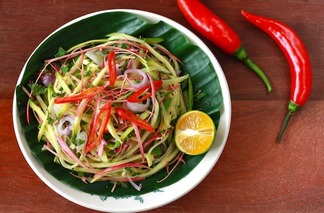
About Kerabu
Kerabu is a kind of Malaysian salad which can be easily found in Kelantanese, Peranakan (Nyonya) and northern Malay cooking. It is normally prepared out of a combination of uncooked or slightly cooked items, sprinkled in the tang-spicy sauce typically made up of fresh lime juice, sambal belacan (chili shrimp paste) combined with coconut milk in rare instances.
The difference between Western-style salad and kerabu is that it is less dependent on oil-based dressing and more on strong and offensive condiments and fresh herbs such as daun kesum (Vietnamese coriander), lemongrass and mint. The food may be vegetarian, seafood or meat based, it varies with the region and the occasion.
Kerabu, depending on the mainstream, can be enjoyed as an important component dish in celebratory feasts, a cleansing side or even a complete snack. It is really addictive with its explosion of flavors sour, salty, spicy and a little sweet — a perfect spicy Thai-style salad with a Malaysian twist.
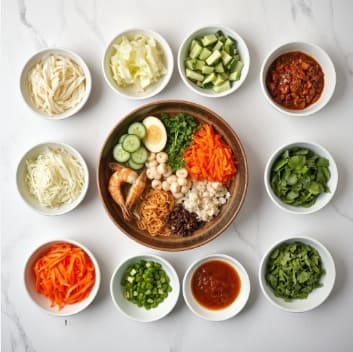
Ingredients and Substitutes in Kerabu
- Vegetables, Shredded- Bean sprouts, cucumbers, cabbage, carrots, long beans or green mango are some of the usual varieties. These add crunchiness and freshness. Substitutes: strips of the zucchini or green papaya, red cabbage
- Herbs- Daun kesum (laksa leaf), mint, coriander, Thai basil and lemongrass is abundantly used. These add Kerabu to its unique smell and taste
- Protein (optional)- They may contain boiled prawns, shredded chicken, anchovies or fish flakes. To create a vegetarian one, tempeh or firm tofu can be used
- Toasted Coconut (Kerisik)- Ground, dry toasted coconut, which offers a nuttiness. Alternative: toasted shredded coconut in a dry pan
- Sambal Belacan or Chili Paste- This type of paste is a spiced, fermented paste combining shrimp with chili to provide mega heat and umami. May be swapped with Thai chili paste or sambal oelek in case of necessity
- Lime Juice or Calamansi- The souring agent is. You can use lemon juice but it would be more genuine using lime or calamansi
- Fish Sauce or Salted Fish (Ikan Masin) – Salty and deep. Vegetarian versions use soy sauce or mushroom sauce
- Shallots- Thinly cut shallots make a sweet crunch. In case shallots are unavailable, one can use red onions
- Sugar or Palm Sugar- A little is required to neutralize the tartness and spiciness
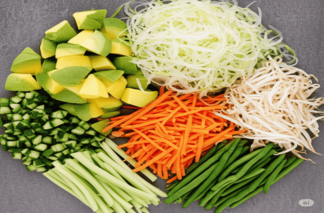
How to prepare Kerabu?
Shred or Julie-size whichever vegetables you pick. For example:
- 1/2 cup shredded green mango, or cucumber
- One & half cup bean sprouts (blanched)
- Quarter of a cup of shredded carrots
- 2-3 long beans (thinly cut)
- Put them into a large mixing bowl and refrigerate as other ingredients are prepared
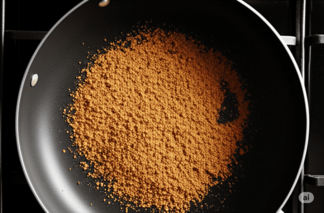
Roast Coconut
In a low heat cooking pan, toast 2 tablespoons of grated coconut in a dry pan until golden and fragrant. Give a good bottom stirring to prevent burning. Set aside
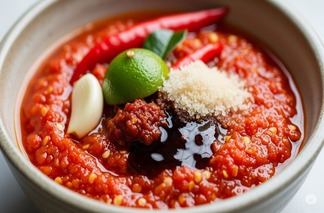
Prepare the Dressing
Mash:
- 1-2 red chillies
- 1 tbsp sambal belacan or chili paste
- 1 clove of garlic
- Lime Juice or calamansi
- 1 tsp fish / soy sauce
- 1 tsp palm sugar/ ordinary sugar
- Season to taste, and it must be tangy, spicy, salty and a bit sweet
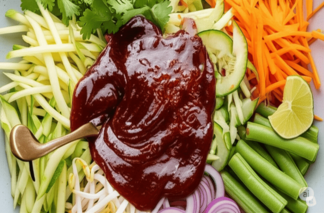
Mix Things Up All Together
To the cold vegetables add:
- 2 tbsp of finely chopped herbs (mint, coriander, laksa leaf)
- Toasted coconut
- Optional protein (Half cup boiled shrimp / shredded chicken)
- Shallots 1-2 thinly sliced (1-2)
- Add the dressing and combine all the flavors gently tossing around
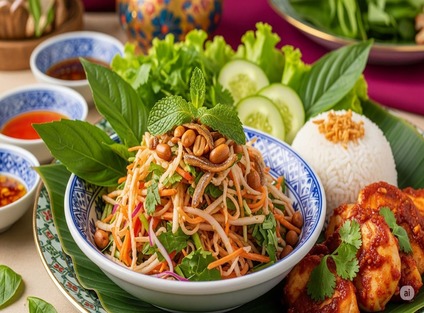
Garnish, Serve and Enjoy
To serve, on a platter or in a bowl accompanied by an extra few herbs or toasted peanuts, or crispy anchovies to give depth of texture. It is best eaten cool. Kerabu makes a wonderful side dish or main course which combines so well with:
- Steamed rice
- Seafood or meat grilled
- As accompaniments in a celebration or Nyonya feast
Everyone likes to enjoy it fresh, chilled or at room temperatures, but it is all about buff-coul flows, texture, and balance.
Easy Kerabu recipe with fresh herbs and lime is what makes this such a versatile dish for all occasions. Try a spicy and tangy Kerabu salad for summer, and you’ll fall in love with this medley of herbs and heat.
Kerabu Mangga, Kerabu Soo Hoon and Kerabu Taugeh are some of the names belonging to this general dish that packs a flavorful freshness in any Malaysian eating table.
And tell me whether you want to have a particular version of it, mango, noodle, seafood, or vegetarian.














